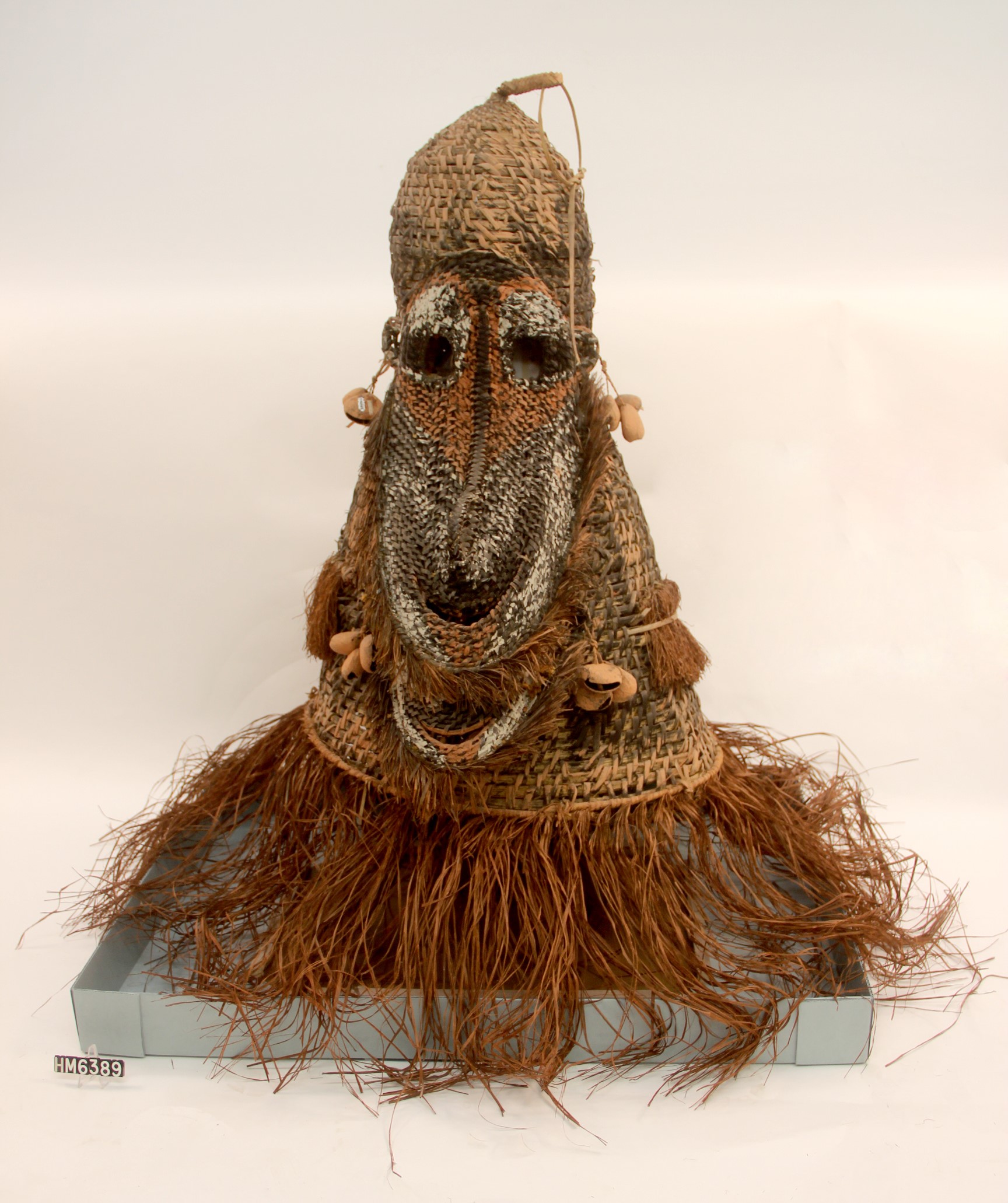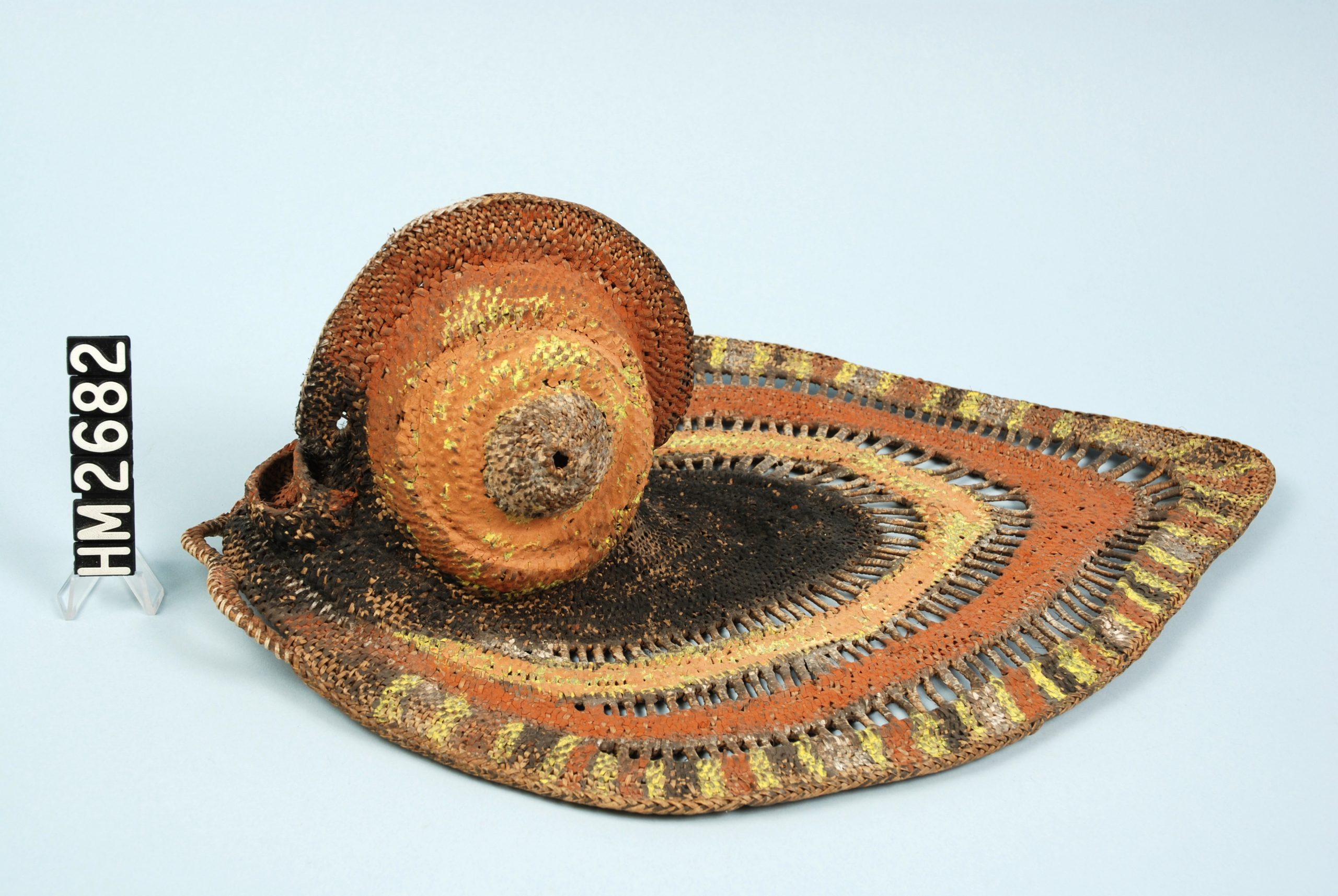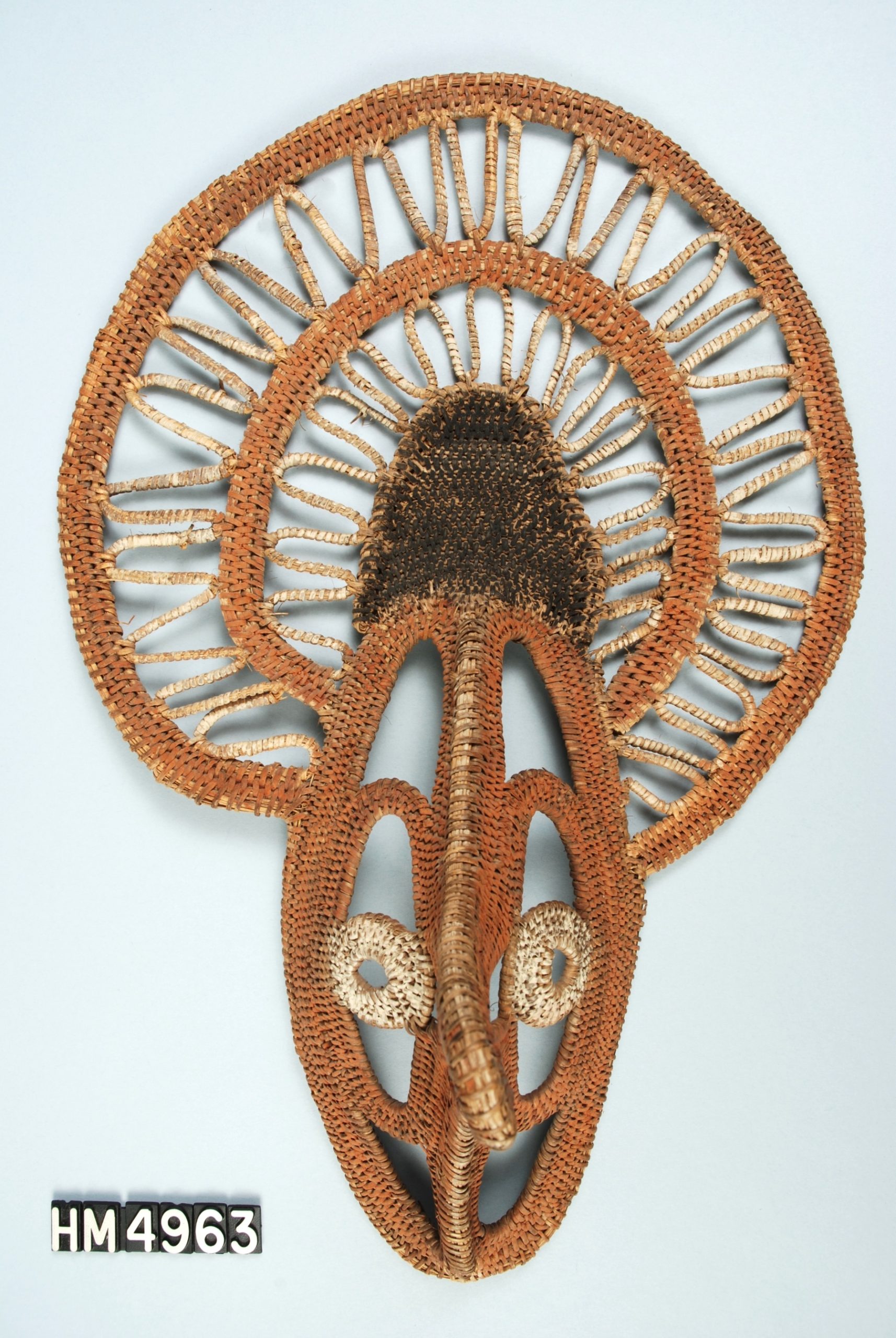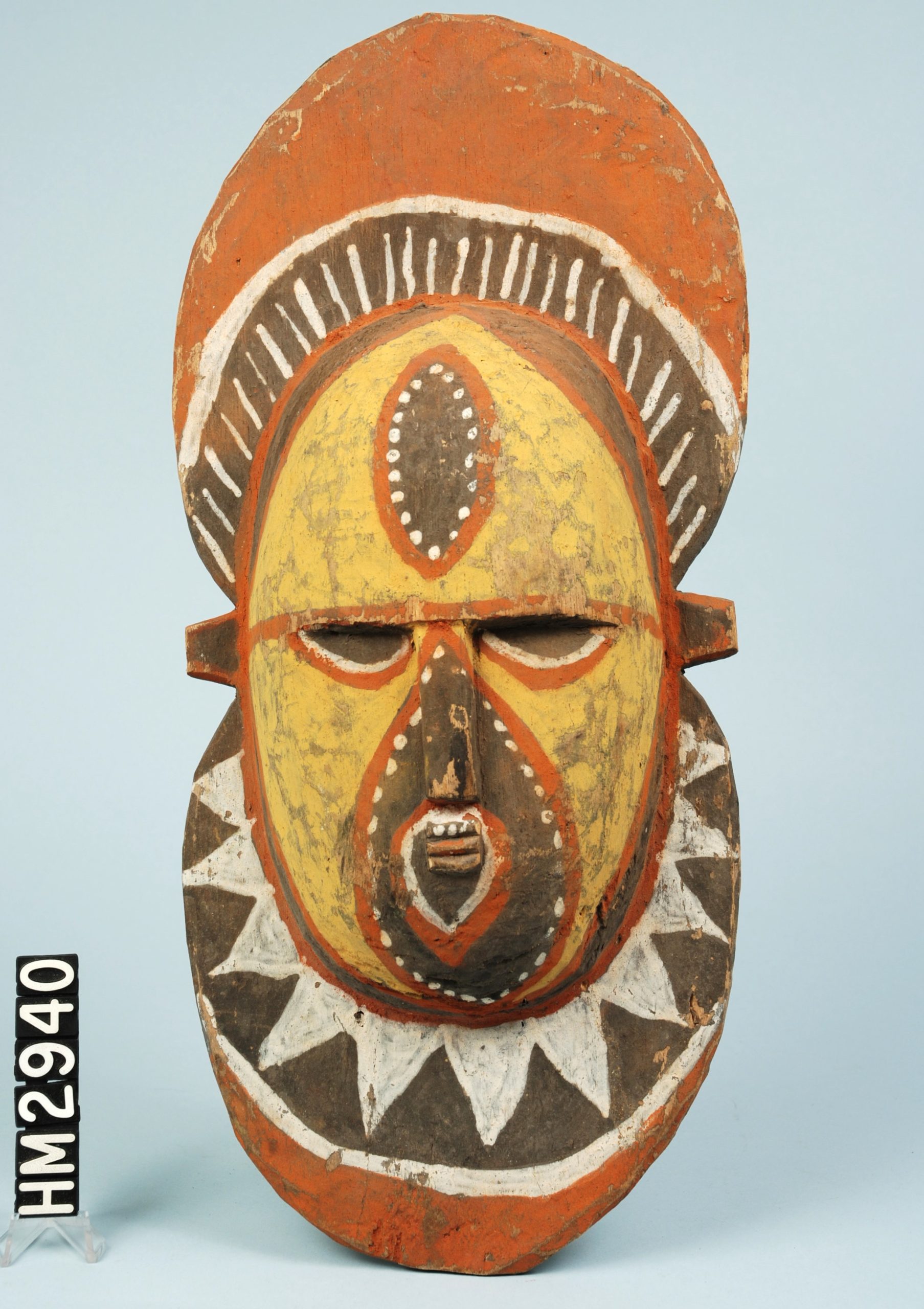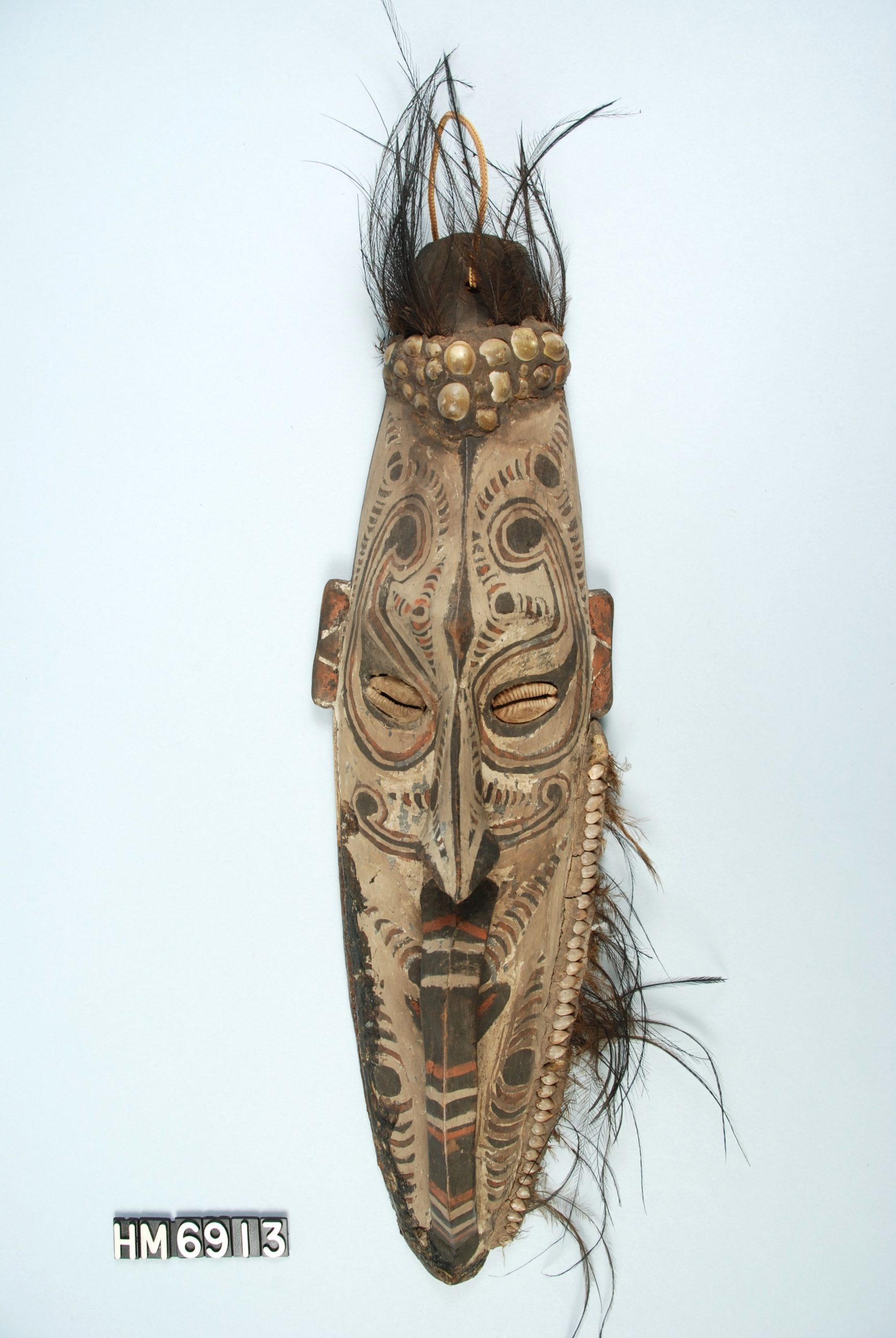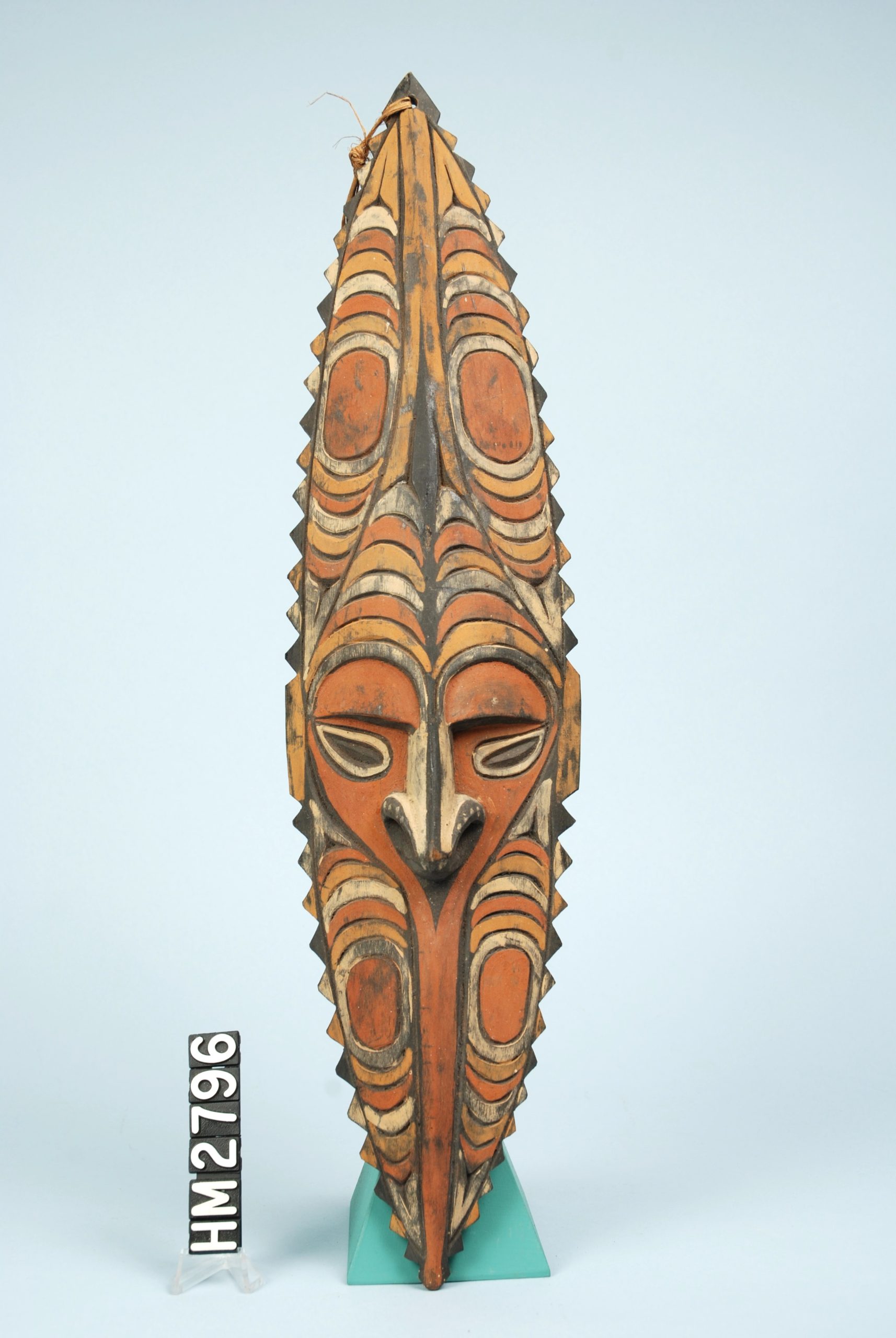Masks
The masks of Melanesia are remarkable for the range of forms and materials used to make them. Some play a role in rituals either portraying mythical beings or meditating between the living and the dead. Some communicate community values to children while others are manifestations of group and social status. Not all of these masks were designed to be worn as the woven basketry masks were affixed to large ceremonial yams which honored ancestral beings.
Dance Mask
c. 1980
Iatmul, Tambanum Village, Papua New Guinea
Dance masks are associated with clans – crocodile, pig, sago – and were used to ask relatives for firewood or food, punish inappropriate behavior, especially by adolescents, or to celebrate the completion of a house or canoe.
Ambassador Nicolas Salgo Collection
HM6389
Yam Mask
c. 1990
Abelem, East Sepik Province, Papua New Guinea
Worn not by people, but by giant yams – that grow as big as twelve feet long. A man’s social status was determined by his ability to grow enormous yams.
Martha J. Stevens Collection
HM2682
Yam Mask
c. 1900
Abelam, Papua New Guinea
This piece was collected in the 1940s and dates to the turn of the 20th century. It is from the Maprik reigion.
White Collection
HM4963
Yam Mask
c. 1990
Abelam, Papua New Guinea
This mask, unlike the woven basketry yam masks, is carved and painted.
Martha J. Stevens Collection
HM2940
Mai-style Mask
c. 1982
Sepik River, Papua New Guinea
Rose Sober Zeiber was born in South Africa and lived in Israel and New York City before retiring to Maine. She was a world traveler who visited many exotic locations and brought home objects from her travels.
Rose S. Zeiber Collection
HM6913
Tourist Mask
c. 1990
Tambanum Village, Papua New Guinea
Based on a traditional mask form, this piece is typical of the art made for tourists in the late 1990s.
Martha J. Stevens Collection
HM2796

